Founded in 1930 by James Kemsey (JK) Wilkinson, Wilko was one of Britain’s earliest discounters, and rose to become the dominant one on the high street following Woolworths’ 2008 collapse.
Having last week filed a notice of intention to appointment administrators (NOI), Wilko is in a desperate struggle for survival and thought to be weeks away from running out of cash if a buyer cannot be found.
It followed stalled efforts earlier this year to launch a Company Voluntary Arrangement (CVA), a restructuring process aimed securing rent cuts, and attempts to sell a majority stake in the family-owned home and garden retailer.
The last straw, forcing the NOI, is said to have been GXO halting deliveries, though the logistics provider has since restarted them.
“A logistics provider is absolutely critical to any retail business and about as close to the business as it’s possible to get,” notes Savvy Marketing CEO Catherine Shuttleworth.
Announcing the NOI, Wilko CEO Mark Jackson said there had been offers sufficient to recapitalise the business, but none that would save it from running out of cash in the time it had left.
“While we can confirm we’ve had a significant level of interest, including indicative offers that we believe would meet all our financial criteria to recapitalise the business, at present, we don’t today have an offer that provides the necessary liquidity in the time we have available, given the mounting cash pressures we’re faced with,” he said.
Public affection for Wilko has been evident following the news, which leaves its 12,000 employees and 400 stores facing a highly uncertain future. “We’re humbled by the amount of love you’ve sent our way,” Wilko posted on Facebook the day after the NOI announcement.
So, what has gone so wrong for the once loved high street brand?
A warning shot over the seriousness of Wilko’s financial troubles came in its latest full-year accounts, covering 2021/22, which warned it could run out of cash in the event trading significantly worsened, and said the company was in talks to secure financing in case it was needed. The retailer had recorded a £35.9m operating loss, in what GlobalData notes was its fourth consecutive year of declining sales, with revenue falling 18.6% from 2017/18 to 2021/22.
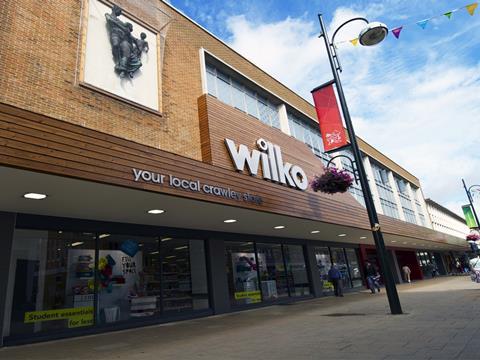
Wilko’s senior changes and job cuts
The business had endured “severe and widespread disruption to supply chains globally” from quarter two on, following the blocking of the Suez Canal by a container ship in March 2021, the accounts said.
In November last year, it raised £48m by selling its DC in Worksop, Nottinghamshire, in a leaseback deal. That was followed in January by a £40m two-year revolving credit facility from lender and Homebase owner Hilco UK, with some questioning the apparent reluctance of then-Wilko chair Lisa Wilkinson – granddaughter of JK – to stump up family money. “If she was prepared to co-fund some of this, it would be easier,” a City source told The Grocer at the time.
Problems were compounded when a trade credit insurer withdrew cover. Retailers can survive without trade credit, but only with supplier support. In this case, some halted deliveries, leading to “weak availability” in stores in recent months, says GlobalData senior analyst Matt Walton.
It was the beginning of the end. “As trade credit insurers pulled their cover, working capital dried and the business soon became commercially unviable,” says Retail Economics CEO Richard Lim.
At the same time the Hilco funding was announced, Lisa Wilkinson stepped aside as chair, remaining on the board as family director. That move followed the appointment of Mark Jackson, formerly of Bensons for Beds, as CEO in December, replacing Jerome Saint-Marc, who had been in the post since 2020.
In other senior leadership changes, Karen Mackay resigned as chief finance officer in February, replaced by Dave Murphy. Mackay had also been in her post since 2020, when she replaced Alex Russo.
The business was making “odd choices” by failing to settle on a leadership team, leaving those that were appointed little time to “carry out a strategy” before “they’ve brought somebody else in”, says Shuttleworth.
January also saw hundreds of roles cut in Wilko stores, and about one in four in its head office, in a deep cost-cutting turnaround plan.
Store locations had been highlighted as an issue in the latest accounts, which said the bulk of them were hit by declining high street and city centre footfall – down 30% on pre-Covid levels.
Lim says: “The back-to-store shift we’ve seen since the pandemic has largely benefited retail parks, where they [Wilko] are underrepresented compared with their peers,” such as Poundland, The Range, B&M and Home Bargains.
The retailer failed to keep pace with sharper rivals
Wilko sources told The Grocer in May it planned to rotate the estate, relocating stores to better-trading locations, but only once the business had been stabilised in the cost-cutting plan. It also faced the task of urgently modernising unsophisticated supply chain principles that had seen stock divided between stores, rather than optimised for location. This meant some stores held unsuitable stock, such as heavy bags of compost in places hard to reach by car.
Or it might be “five litres of paint when you’ve got to get on a bus”, says Shuttleworth. “The sophistication required to run a modern retail business is really significant, and lots of that is in your logistics and supply chain,” she adds.
A supplier source says Wilko “would make decisions based on no strategy whatsoever when it came to ranges and stock”.
The source adds: “When Woolworths disappeared, Wilko jumped in that to fill the gap, but only 10% of the stores were actually profitable. All the rest were lossmaking, so this has been on the cards for years.”
Wilko’s turnaround plan also involved growing revenue by selling more online, including the rollout of click & collect to all stores in February, but Shuttleworth questions this as a priority for a discounter.
“In that sector, a lot of the market doesn’t bother too much with online, because there is not enough margin in it,” she says.
The point was highlighted earlier this year, when B&M dropped an online trial less than a year after launch. In its annual report, the retailer argued “sustainable and profitable online business models remain unproven and this is to our advantage, where we offer low prices without suffering from margin dilution due to cross-subsidisation of online activities”.
Perhaps the biggest pressure on Wilko has been its failure to keep apace with the likes of B&M and other much sharper rivals.
“The supply chain issue comes down to bad management and the focus on expensive city-centre locations is another self-inflicted problem, together with the financial pressures,” says retail analyst Nick Bubb.
“But the basic problem is that consumers have plenty of choice – in stores and online – in discount non-food. And Wilko was always, like Woolies, a jack of all trades and master of none, so it just got squeezed from all sides.
“I also think the competition from the non-food aisles of Aldi and Lidl hasn’t helped its cause,” adds Bubb.
Lim says: “Although Wilko could have benefited from consumers trading down to cheaper alternatives, this part of the market has become fiercely competitive in recent years, with the likes of Poundland, The Range, B&M and Home Bargains all raising their game, with arguably sharper propositions.”
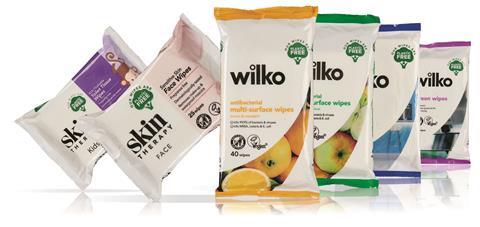
Wilko faces the bailiffs moving in
GlobalData’s Walton says: “Wilko has been caught in a pincer movement on price and design. It has been outflanked on price by the likes of B&M, Home Bargains and The Range while it is unable to compete on design with the likes of Dunelm or Ikea.
“The scale of how far Wilko has fallen behind the discounters is demonstrated by B&M, Home Bargains and The Range all overtaking Wilko for non-food market share by 2021, having been ahead of all of them in 2015. Wilko was also the only one of these retailers not to gain share over this period.”
The CVA had been expected to launch around June, but landlords had also been expected to reject the terms – which for some of them would have meant forgoing rent for three years – in a crucial creditor vote. “Three years? No chance. Madness!” a property source told The Grocer at the time.
The stalling of the process leaves Wilko with unsustainable rent liabilities and long leases. The CVA is said to be still on the table as part of rescue talks between Wilko advisors PwC, a rival discount chain and two private equity firms, but a buyer will have to invest up to £70m, according to The Times.
To make matters worse, Wilko also reportedly faces the prospect of bailiffs moving in to seize stock from stores within three to four weeks, having not paid business rates for three months.
“A store chain with empty shelves is going to find turnaround impossible,” says The Grocer’s property source. “Most parties think it will go into administration.”
GlobalData tips lender Hilco – which is a retail turnaround specialist – as highly likely to be one of the leading bidders, having so far invested £45m, including the £40m revolving credit facility.
But even if a buyer is found, Wilko must still fix its proposition.
“It must create a compelling offer to encourage shoppers to consider purchasing from it again,” says Walton.
“Incorporating more design elements into its offer will help achieve this, as well as improving the store environment and more effectively integrating its online and in-store offer.
“Without a clear strategy for what its retail proposition should be and how it can achieve this, Wilko risks following Woolworths.”







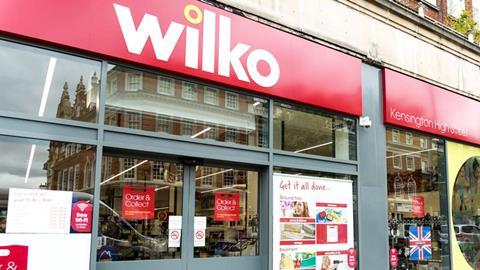
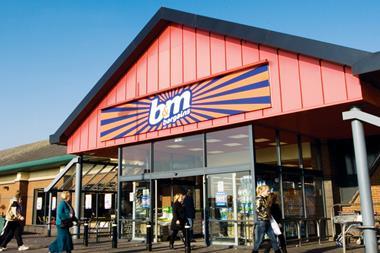
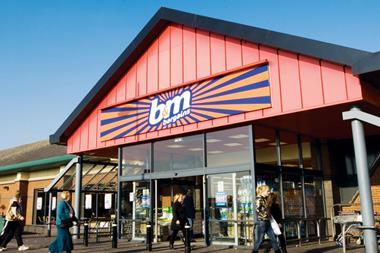
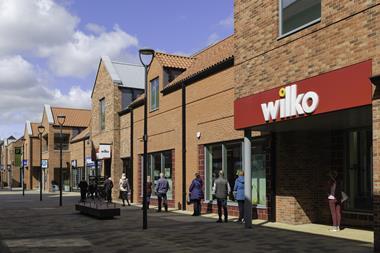
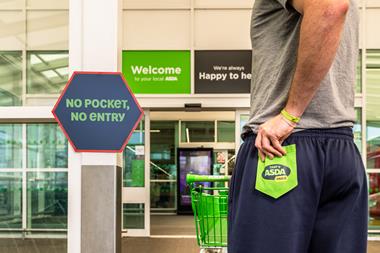








No comments yet